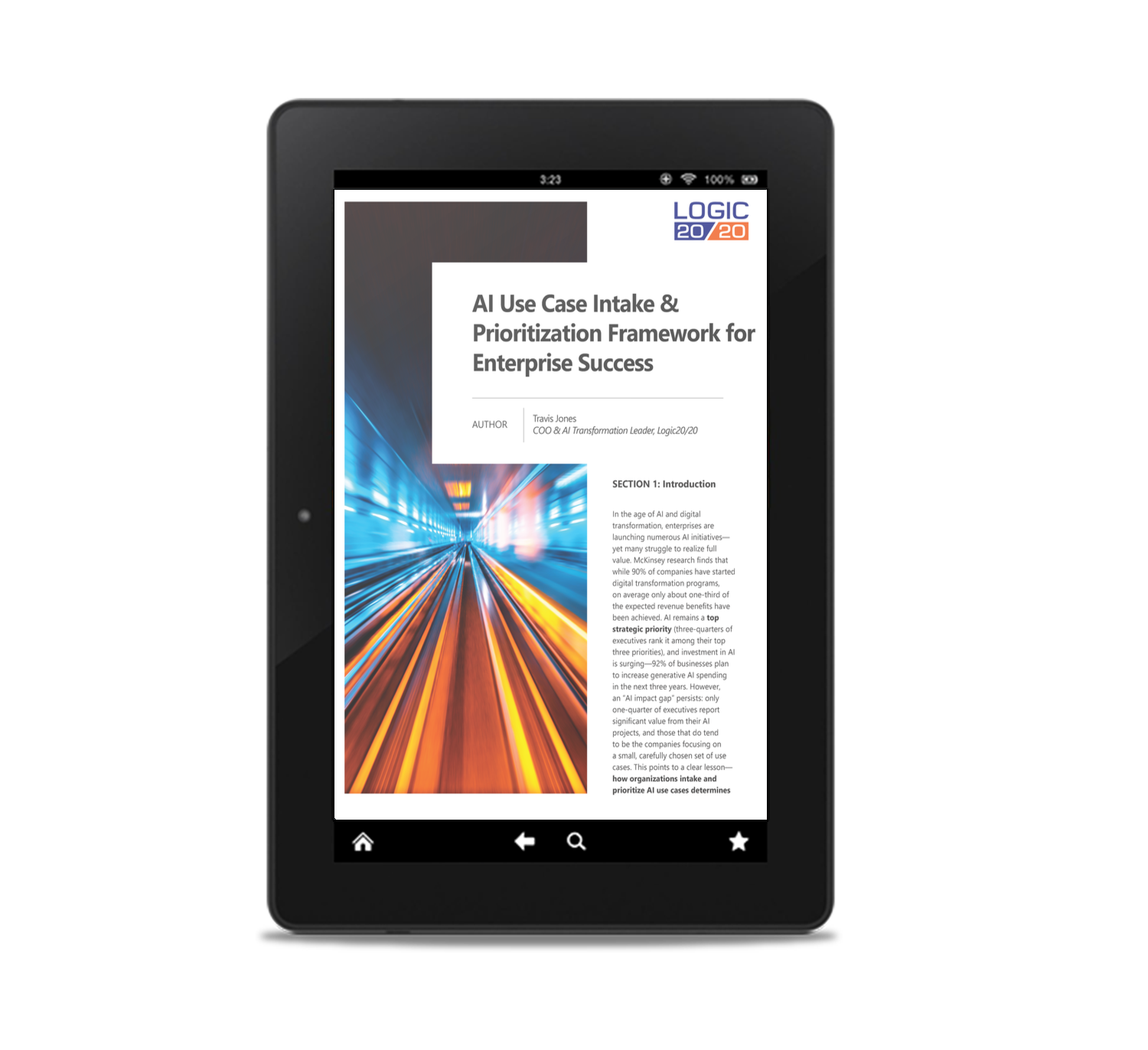
As enterprises ramp up investments in AI, many face a familiar challenge: too many ideas, not enough impact. Only a fraction of initiatives deliver the expected business value—often because organizations lack a disciplined approach to selecting the right opportunities.
Logic20/20 introduces a practical, cross-industry framework for transforming AI from a scattered set of pilot projects into a scalable portfolio of business drivers. Grounded in the proprietary LogicAI Prioritization Framework, our white paper outlines a proven, repeatable approach to evaluating initiatives based on strategic alignment, ROI, feasibility, and organizational readiness.
Key takeaways
Understand why many enterprise AI initiatives underperform—and how structured intake and prioritization can drive measurable business value.
The LogicAI Prioritization Framework
Explore a proven, flexible model for evaluating AI use cases across strategic alignment, ROI potential, technical feasibility, and risk.
Operationalizing AI from idea to execution
Learn how to operationalize a scalable intake and evaluation process that aligns with your organization’s AI maturity and goals.
Governing for value and risk
Discover best practices for empowering stakeholders, managing compliance, and continuously evolving your AI portfolio for long-term success.
A glimpse into AI Use Case Intake & Prioritization Framework for Enterprise Success
The Need for a Structured Intake & Evaluation Process
Implementing AI at scale is not just a technology challenge—it’s an organizational and strategic challenge. Many enterprises have struggled because they lacked a clear front-end process to capture, assess, and prioritize AI ideas. In practice, AI use case ideation can come from anywhere—business units, IT, innovation teams, or vendor pitches—often leading to a long “wish list” of projects. Without a structured intake funnel, this can result in:
- Misalignment with Strategy: Teams may pursue trendy AI projects that don’t truly move the needle. A Deloitte study emphasizes the importance of aligning AI initiatives with overall business strategy, advising organizations to build “bridges to sustained ROI” by prioritizing high-impact initiatives. Neglecting this often leads to impressive technical deployments with minimal business value.
- Resource Dilution: When there’s no clear prioritization, organizations often greenlight too many projects. This “too many bets” problem, cited by BCG, leads to inefficiency. By contrast, top performers concentrate over 80% of their AI investments on a few high-value initiatives. A central intake process helps organizations focus on what matters most.
- Inconsistent Evaluation: Without a unified scoring framework, departments apply different criteria—some emphasize payback time, others focus on risk avoidance. A standardized evaluation model ensures that every use case is judged on the same terms, improving transparency and alignment, regardless of whether it originates at the enterprise or business unit level.
- Siloed or Redundant Efforts: Multiple teams might unknowingly pursue similar AI solutions—such as developing their own NLP models or dashboards—without knowledge sharing. A central intake process helps identify redundancies and encourages reusability of models, data assets, and platforms.
- Unmanaged Risk and Compliance: Use cases involving customer data or third-party platforms can pose compliance, ethical, or security risks. A formal intake process brings visibility and enables early identification of red flags—before a project moves into development.
Ready for more? Download your copy of AI Use Case Intake & Prioritization Framework for Enterprise Success today.

